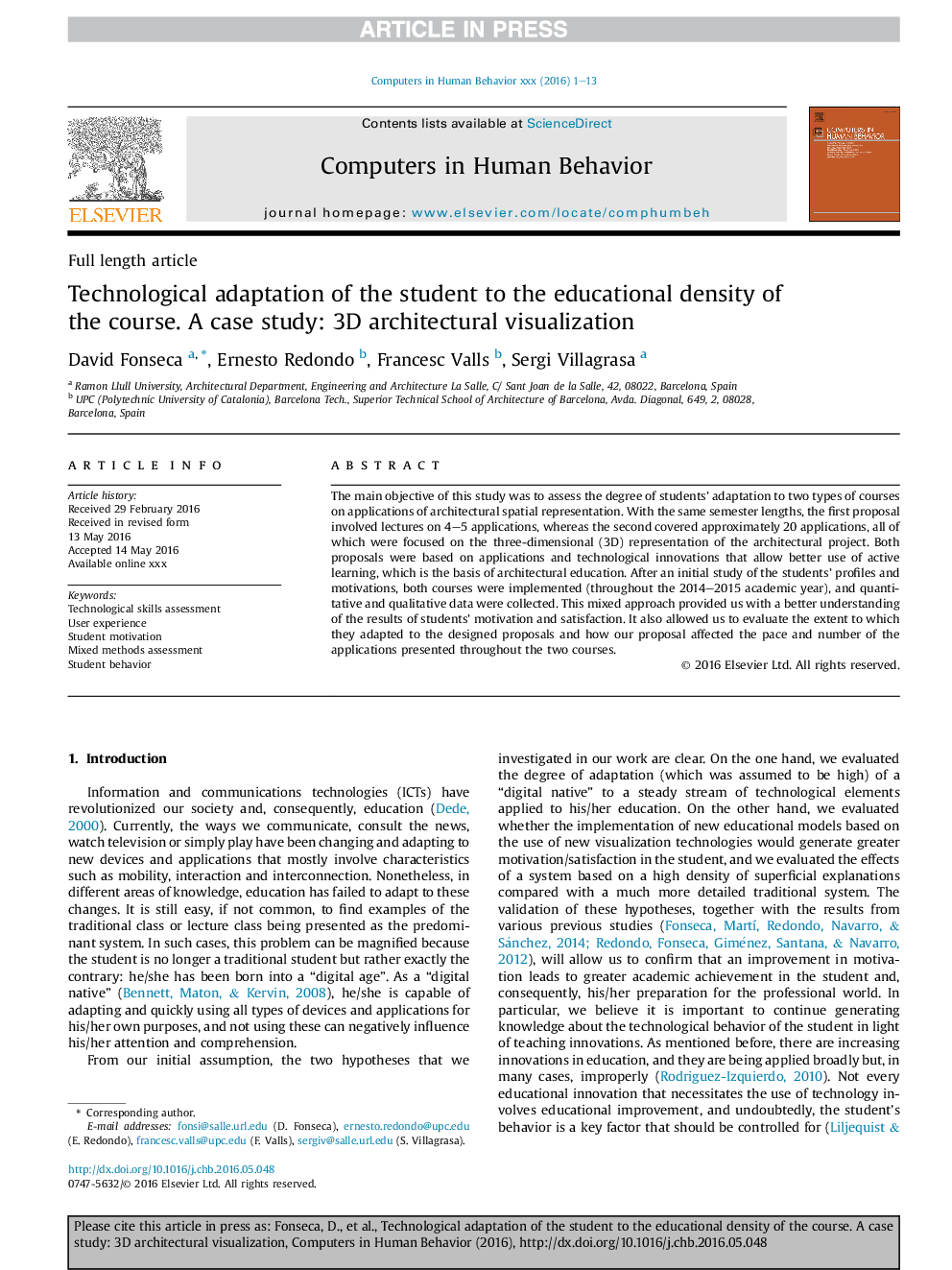| Article ID | Journal | Published Year | Pages | File Type |
|---|---|---|---|---|
| 4937129 | Computers in Human Behavior | 2017 | 13 Pages |
Abstract
The main objective of this study was to assess the degree of students' adaptation to two types of courses on applications of architectural spatial representation. With the same semester lengths, the first proposal involved lectures on 4-5 applications, whereas the second covered approximately 20 applications, all of which were focused on the three-dimensional (3D) representation of the architectural project. Both proposals were based on applications and technological innovations that allow better use of active learning, which is the basis of architectural education. After an initial study of the students' profiles and motivations, both courses were implemented (throughout the 2014-2015 academic year), and quantitative and qualitative data were collected. This mixed approach provided us with a better understanding of the results of students' motivation and satisfaction. It also allowed us to evaluate the extent to which they adapted to the designed proposals and how our proposal affected the pace and number of the applications presented throughout the two courses.
Related Topics
Physical Sciences and Engineering
Computer Science
Computer Science Applications
Authors
David Fonseca, Ernesto Redondo, Francesc Valls, Sergi Villagrasa,
